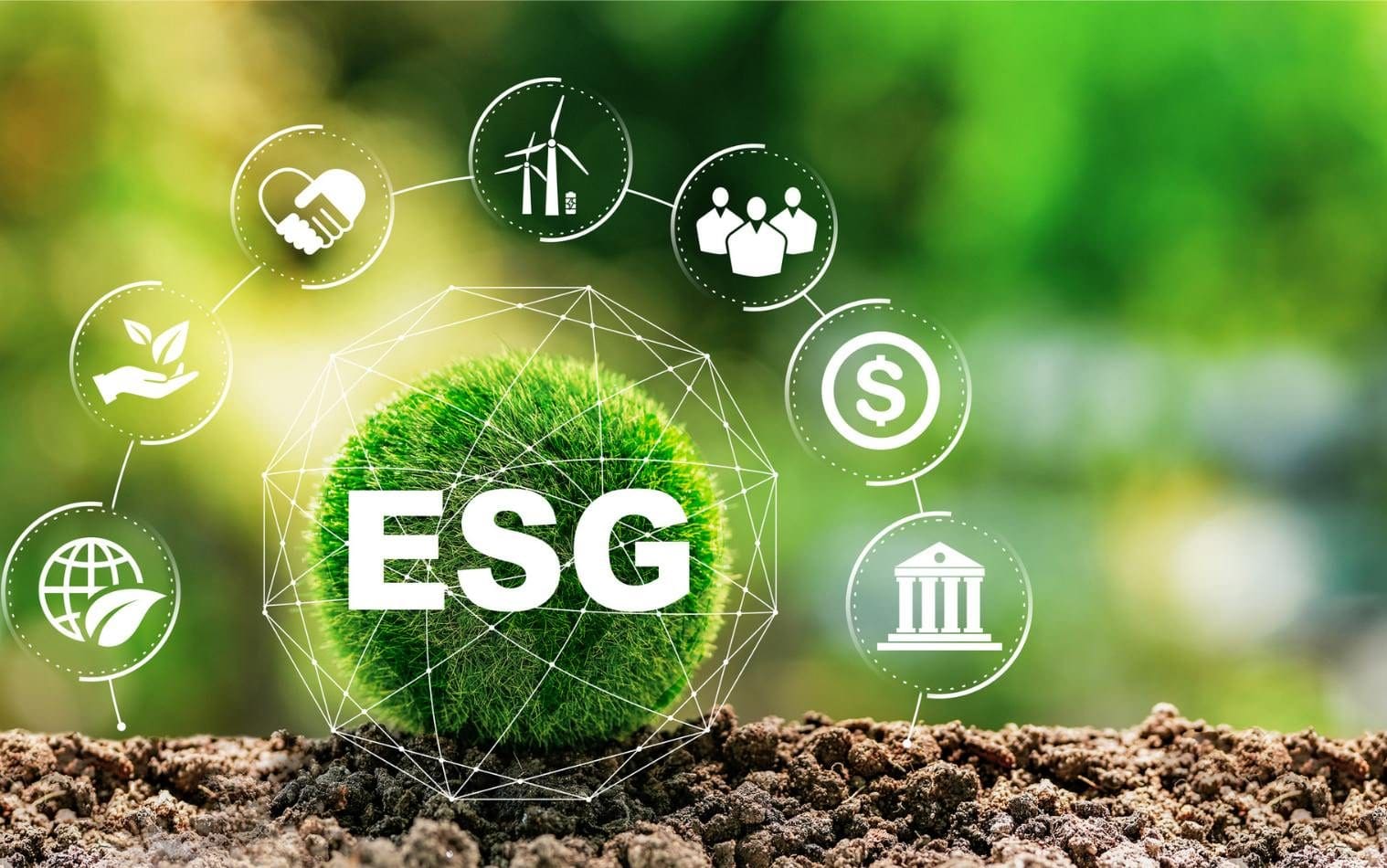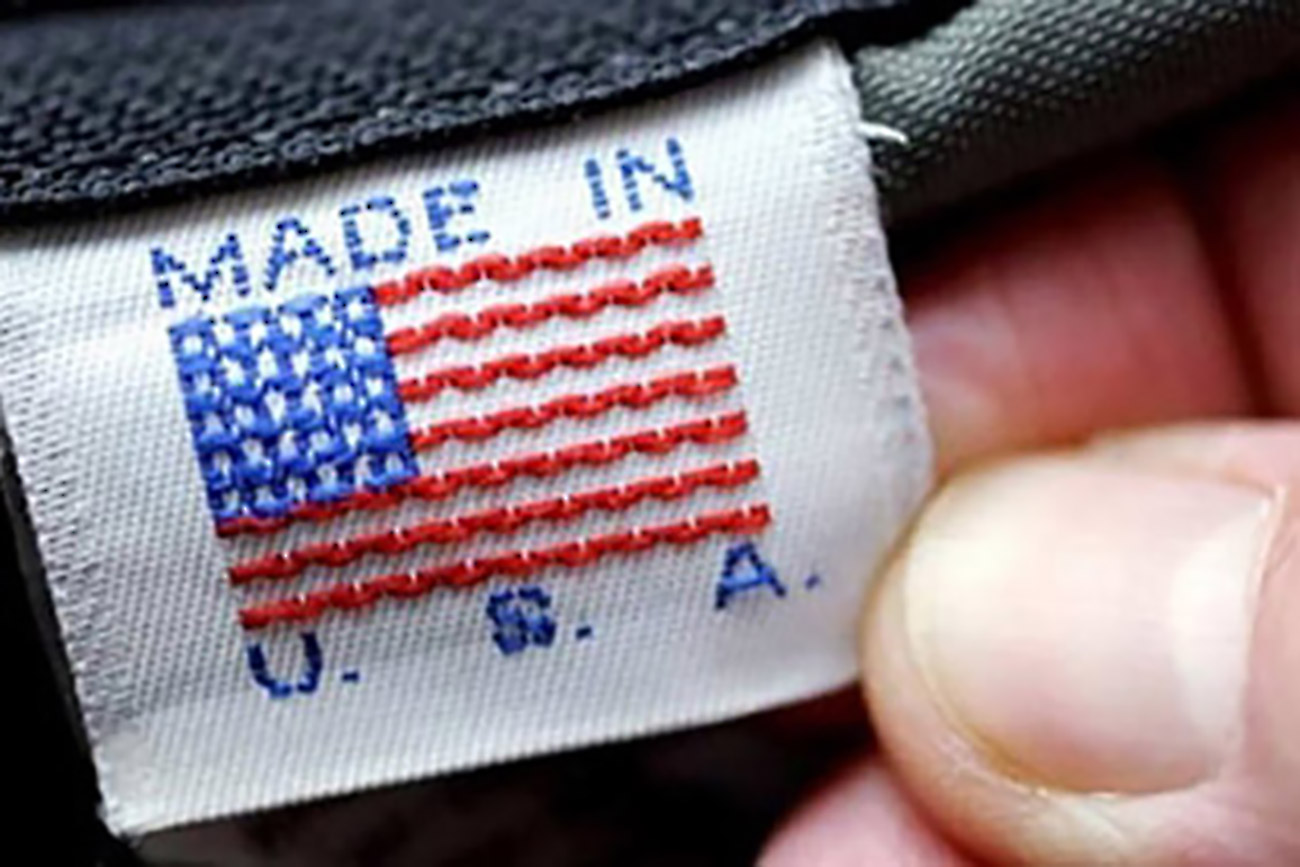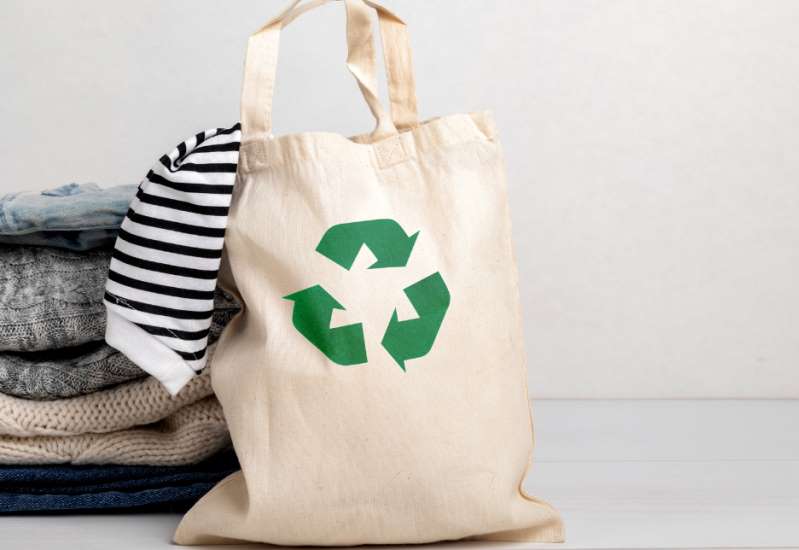FW
"Many western brands, which sourced from the country owing to low wages and other benefits, moved away to other sourcing destinations. And the conclusion of recent TPP agreement would further move sourcing to Vietnam, leaving Bangladesh to think and act fast amid rising competition"

After incidents like the Rana Plaza building collapse and fire calamity in Bangladesh’s apparel industry that claimed several lives, there was a question mark on its safety and compliance eligibility. Many western brands, which sourced from the country owing to low wages and other benefits, moved away to other sourcing destinations. And the conclusion of recent TPP agreement would further move sourcing to Vietnam, leaving Bangladesh to think and act fast amid rising competition.
Strengthening raw material base

Bangladesh has been a leading global exporter of readymade garments (RMG) and earns around 76 per cent of its foreign exchange through exporting textiles and readymade garments. Presently, almost 100 per cent export-oriented knitted fabrics are being produced in the country but more than 60 per cent of the export-oriented woven fabric is imported making its RMG expensive. Also other raw material requirements such as 100 per cent of dyes, chemicals, spare parts and machinery are also imported. So in order to become competitive against its rivals such as Vietnam and Cambodia, Bangladesh will have to look into strengthening its raw material base to offer better price points.
Another aspect, is value addition. Bangladesh should simultaneously try to increase the export price by adding value to its products. Another most important point that can bring down costs significantly is the eliminations of middleman.
Directly dealing with the importers
The three-way process that involves transaction between the manufacturer to middleman and then middleman to importer leads to significant rise in costs. Now, while manufacturers are trying to reach out to suppliers directly skipping the agents on one hand to bring down cost on raw material, on the other they are directly negotiating with the importers to offer competitive price-points by eliminating the middleman.
While the process has begun, industry experts feel that the manufacturing companies need to invest in improving skill-sets of their marketing executives and a marketing strategy to deal with overseas buyers directly. The sector has hired many Sri Lankan, Indian and Pilipino production and quality control executives to gain confidence of the buyers. In fact, Bangladesh is relying on buyers' agent for orders. However, they need to train domestic employees to become the trusted marketing agents.
The country’s RMG exporters, instead of completely depending upon the traditional importing markets such as the US and EU must also explore markets like Japan, Australia, Russia, Eastern Europe, the Nordic countries, Central Asia, Africa and the Middle East to establish their presence in the global market. Its time, serious investment and effort is made to combat the competition.
According to a recent World Bank study, in the event the local RMG industry in Bangladesh is able to capture the attrition of about 20 per cent of China's apparel exports, Bangladesh's export volume will increase by at least $29 billion creating 5.4 million new jobs and 13.5 indirect employments.
While the National Textile Policy is yet to reach its final conclusion, various Indian states have announced policies to boost their respective textile sectors. In May, the Textiles Minister in a written reply to a question put up in the Rajya Sabha said, “The expert committee has since submitted a draft vision, strategy and action plan. The new National Textiles Policy is currently under finalisation.” The much awaited new policy aims to achieve $300 billion textiles exports by 2024-25 and expects to create 35 million jobs.
On the other hand, the state governments did their bit to support the segment by announcing policies. Andhra Pradesh, for instance, announced capital subsidy on the investment to the extent of Rs 10 crores to standalone garmenting and apparel units, financial assistance of up to 50 per cent of expenditure on common facilities in the case of textiles/apparel parks are among the other facilities. And for the employees working in these units, the government has announced extended training fee and the transport subsidies. It would provide a host of other incentives including 12.5 per cent interest subsidy and a power subsidy of Rs 1 per unit for spinning and Rs 1.50 per unit for ginning units. Refund of VAT on purchase of intermediate products and reimbursement of tax to the extent of 100 per cent of the eligible fixed capital investment in plant and machinery for a period of five years are also provisions provided for in the policy.
In May 2015, West Bengal Chief Minister, Mamata Banerjee also announced state’s plans to invest over Rs 26,000 crores to develop MSME and textiles sectors. A separate textiles policy of the state is also shaping up to encourage joint ventures and PPP model of garment factories to create employment opportunities for six lakh people in the state. Also, Karnataka government tweaked its Javali Neethi (Textile Policy) 2013-18 to strengthen textile value chain activities in October this year. Since Karnataka is very strong in garmenting; the policy centres on the dual approach of development, i.e. strengthening of existing value chain activities and filling the gaps in creating the facilities for value chain activities. The aim is to attract Rs 8,000 crores investment by 2018 and create four lakh employment opportunities in the state.
And the new Minister of Industries in Maharashtra, Subhash Desai announced plans to introduce a new textiles policy to boost the sector. Even the Government of Tamil Nadu, at a Global Investor’s conference in September this year, announced that the state would soon announce a new textiles policy, making the already successful industry a top destination for investment.
Texmin.nic.in
Since Korea is not a part of the Trans-Pacific Partnership agreement, it’s likely to suffer huge export losses over the next 10 years. Korean companies' exports to 12 member TPP nations, made from their manufacturing bases in Vietnam, are expected to drop $620 million a year and their shipments via global supply networks in Mexico are also expected to drop $290 million.
The estimated export losses for the textile industry are $420 million. Although Korea has already signed FTAs with 10 of the 12 TPP members, the price competitiveness of Korean exporters, applied by complicated rules of origin, cannot help but lag behind those of their counterparts in member nations, which are applied by a uniform set of completely cumulative rules of origin.
The US-led free trade agreement is expected to abolish all import duties among its signatories. If Korea is excluded from the Asia-Pacific global supply networks to be created by the TPP, it would adversely affect the nation’s export of parts and materials, directly and indirectly.
Korea’s reliance on global value chains has increased since 2008. If the country joins the FTA, it will help Korean exporters make the most of their supply networks and set up new business models.
Vietnam’s textile-garment exports are up 10 per cent in 2015 as against 2014. Apparel shipments to the US have climbed nearly 13 per cent this year while exports to the EU have grown six per cent, to Japan by eight per cent and to South Korea by 8.77 per cent.
However, despite a jump in apparel exports this year, profits remained low as firms have had to cut prices to compete with rivals amid a global economic slump and fall of many currencies against the US dollar. For instance, China, India and Indonesia devalued their currencies, making exports more competitive. Therefore, Vietnamese manufacturers have had to cut prices, leading to lower profits. On the other hand, cotton prices have plunged below 60 cents per pound and filament polyester prices dipped to their lowest in October. This left a negative impact on cotton producers, who had to lower prices or suspend deliveries.
The textile-garment sector will have to cope with a slew of challenges in 2016 as the exchange rate with the dollar will likely fluctuate. This will affect firms’ export prices, revenue and profit. However, Vietnam’s participation in bilateral and multilateral free trade agreements has made the country’s textile-garment products attractive to importers.
Japan is a promising market for Pakistani textile products but Pakistan is facing a disadvantageous position because of differential market access, as compared to regional competitors like India, Bangladesh and other Asean countries. Other regional countries enjoy duty free access to the Japanese market, either because of regional trading arrangements or having a LDC status.
Although Pakistan has GSP Plus status and is facing on an average lower duties than other countries, the tariff imposed on Pakistan’s exports is higher than the tariff imposed on exports from India, Bangladesh and Asean countries. Since the establishment of diplomatic relations between the two countries, Japan has always remained at the forefront to assist Pakistan in socio-economic development.
The automobile industry of Japan and the textile industry of Pakistan have contributed significantly to the good relationship between two countries. Pakistani raw cotton had supported the textile industry in Japan after World War II and contributed to the economic revival of Japan. Japan in turn has cooperated with Pakistan in various sectors, especially in the field of education.
Japan has expressed its desire to support the Pakistani textile industry in 2016 in order to produce high value added products and strengthen its international competitiveness.
According to the China Chemical Fiber report, in the year of 2016, China nylon 66 chip market will see development of three plants, joining in or expanding original capacity, enlarging total domestic nylon 66 chip capacity to 505kta, significantly up 74 per cent year on year. There would be a rising competition in China among the four major producers, Shenma, Huafon, Xingjia (including Anshan Guorui), and Huayang. In March 2014, Invista entered the market with the construction of a new 150kta hexamethylene diamine (HMD) plant and a 150kta nylon 66 polymer plant at the Shanghai Chemical Industry Park in Shanghai, China.
Invista has announced plans to add a 300kta adiponitrile (ADN) plant at the site in future using its proprietary technology, and would supply to its downstream HMD production in the future. The three plants would be located adjacent to each other. The HMD plant is expected to start commercial production in early 2016, followed by its nylon 66 polymer production in May 2016. In the year of 2016, apart from Invista, nylon 66 chip plants, integrated with both HMD and polymer production, are only two, Shenma and Xingjia (including Anshan Guorui).
In 2015, Shenma has close-to half of China’s nylon 66 chip production capacity, followed by Huafon (28 per cent), Xingjia (17 per cent) and Huayang (7 per cent). The pattern will be changed in 2016, as Invista will be the largest nylon 66 chip producer in China, taking a proportion of 29 per cent, followed by Shenma (28 per cent), Xingjia (20 per cent), Huafon (16 per cent), and Huayang (7 per cent). However, with 74 per cent capacity increase in 2016, the actual growth in supply (import and domestic production) will be much smaller.
Invista will not only supply nylon 66 chip polymer (150kta) but also HMD (215kta) to China. The consumption of HMD is 0.45mt for per metric ton production of nylon 66 chip, theoretically using 67.5kt HMD, and the rest will be supplied to other polymer producers, Huafon and Huayang. It will be much cheaper than import raw materials with saved tariff and transportation fees. Therefore, the cost edges, originally enjoyed by only two integrated plants, Shenma and Xingjia, will also be shared by Huafon and Huayang.
www.ccfgroup.com
www.invista.com
According to the China Chemical Fiber report, in the year of 2016, China nylon 66 chip market will see development of three plants, joining in or expanding original capacity, enlarging total domestic nylon 66 chip capacity to 505kta, significantly up 74 per cent year on year. There would be a rising competition in China among the four major producers, Shenma, Huafon, Xingjia (including Anshan Guorui), and Huayang. In March 2014, Invista entered the market with the construction of a new 150kta hexamethylene diamine (HMD) plant and a 150kta nylon 66 polymer plant at the Shanghai Chemical Industry Park in Shanghai, China.
Invista has announced plans to add a 300kta adiponitrile (ADN) plant at the site in future using its proprietary technology, and would supply to its downstream HMD production in the future. The three plants would be located adjacent to each other. The HMD plant is expected to start commercial production in early 2016, followed by its nylon 66 polymer production in May 2016. In the year of 2016, apart from Invista, nylon 66 chip plants, integrated with both HMD and polymer production, are only two, Shenma and Xingjia (including Anshan Guorui).
In 2015, Shenma has close-to half of China’s nylon 66 chip production capacity, followed by Huafon (28 per cent), Xingjia (17 per cent) and Huayang (7 per cent). The pattern will be changed in 2016, as Invista will be the largest nylon 66 chip producer in China, taking a proportion of 29 per cent, followed by Shenma (28 per cent), Xingjia (20 per cent), Huafon (16 per cent), and Huayang (7 per cent). However, with 74 per cent capacity increase in 2016, the actual growth in supply (import and domestic production) will be much smaller.
Invista will not only supply nylon 66 chip polymer (150kta) but also HMD (215kta) to China. The consumption of HMD is 0.45mt for per metric ton production of nylon 66 chip, theoretically using 67.5kt HMD, and the rest will be supplied to other polymer producers, Huafon and Huayang. It will be much cheaper than import raw materials with saved tariff and transportation fees. Therefore, the cost edges, originally enjoyed by only two integrated plants, Shenma and Xingjia, will also be shared by Huafon and Huayang.
www.ccfgroup.com
www.invista.com
Ghana’s local market has been suffering over the last one decade since it is flooded with cheap imports, mainly arriving from China. Experts point out that the employment in the domestic industry is now reduced to mere 3,000 jobs from almost ten times this number in 1980s.
According to Charles Asante-Bempong, Director at the Ghana Employers’ Association (GEA), the low quality copies of goods flooding the markets are killing domestic manufacturing businesses. Also, raw materials is another issue. Except for locally produced cotton used by the manufacturers, many of the dyes, chemicals and machines are imported from abroad at very high rates. For example, located in Tema, GTP is one of only four factories still operating. Renowned for its traditional designs and wax printed fabrics, the company has seen production levels drop 30 per cent and its production unit half since 2005.
Dealing with counterfeit good has become a huge issue and lack of government support is further damaging the prospects of once flourishing textile industry.
www.ghanaemployers.com
Spandex, a copolymer based on polyurea-polyurethane also known as elastane are used in a wide range of textiles due to its qualities like strength and strong elasticity as well its ability to return to its original shape after stretching as compared to ordinary fabrics. The global market for spandex has been constantly increasing due to rising demand from the textile and apparel industry.
However, on the other hand, the prices of spandex are witnessing a fluctuation at minimal rates. In early July 2014, prices of spandex were reduced due to weak trading activities, as well as the easing of tight supply of spandex and low demand from the downstream market. Although the market for spandex is currently growing, it has been extremely challenging with demand being weak in emerging economies such as the US since the global economic slow-down in 2008.
Spandex was first manufactured by E. I. du Pont de Nemours and Company. The fibers of spandex are manufactured through various processes such as solution wet spinning, solution dry spinning, reaction spinning and melt extrusion. All the processes include the reaction with monomers to develop a prepolymer, after which it is reacted further through certain techniques to finally make the fibres. Among all the methods, dry spinning is the most preferred choice for manufacturing spandex fibres.
After receiving four coveted awards in 2015 – Global Leadership Award in Sustainable Apparel (GLASA) 2015; Organic Cotton Round Table Innovation Challenge Award 2015; India International Trade Fair 2015 (Best display Award-Integrated Skill Development Scheme); and Maximum employment Provider Award (Large Industry Category for 2014), Pratibha Syntex is looking forward to achieving a growth target of Rs 1,500 crores by 2020.
Its sustainability efforts were also lauded as it received verification for water and carbon footprint by KPMG and life cycle analysis for cotton modal, spun dyed viscose, cotton viloft and recycled poly cotton. The company is known for its inner wear, leggings, tops, tees and polo shirts, among others and reported a group turnover of Rs 822 crores in the financial year 2014-15.
While the decline in currencies like euro and rand impacted its export business last year, the company is looking forward to an export growth of Rs 600 crores next year.
www.pratibhasyntex.com












